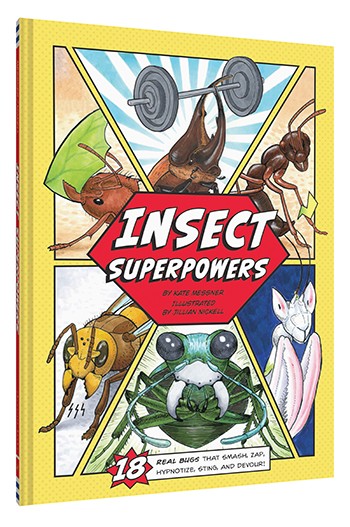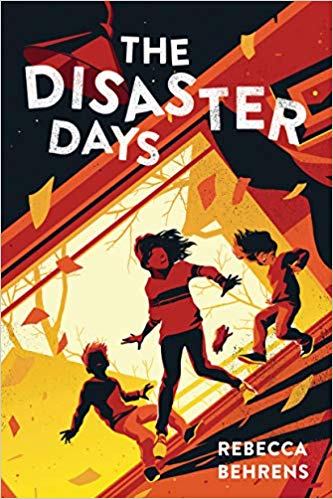
Insect Superpowers: 18 Real Bugs That Smash, Zap, Hypnotize, Sting, and Devour! by Kate Messner is a great book to feed any kid’s budding interest in science. Jillian Nickell’s illustrations show in graphics how these often tiny creatures repel predators, find food, and more. Some of the facts seem more fit for a “believe it or not” entry, like the African bombardier bettle, which sprays a hot, noxious mist from its backside when threatened. Or the Bullet ant, which has a sting so powerful its sting hurts for a full day.
The book starts with a descriptor of the insect family tree, and how these bugs are classified scientifically. Then, six chapters focus on different bug superpowers, such as speed camouflage, size, and chemical emissions. Each profile of an insect starts with the common name, what it’s commonly known as, and the scientific name. Narrative with facts is interspersed with scenarios that read like a superhero comic book. It’s designed to keep kids turning and staying engaged as they learn.
I recommend Insect Superpowers for readers aged 9 to 12.
The publisher provided me with a copy of this title in exchange for my honest review.








